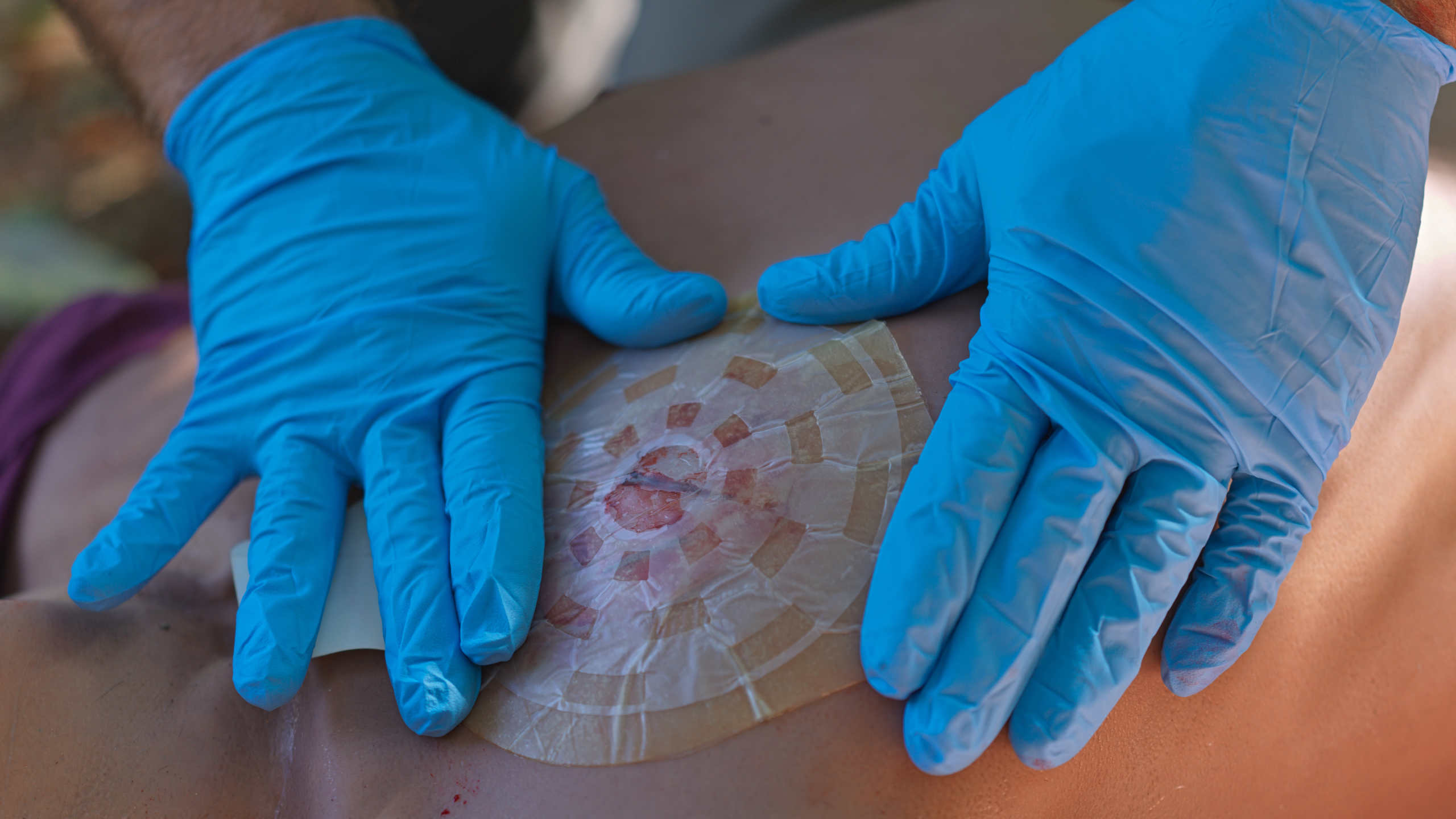
Chest Seal and Tourniquet application
Control the BleedUse this resource in conjunction with your real-world training

Experience Summary
This immersive 360° video demonstration provides a step-by-step guide on the correct application of a chest seal and tourniquet, which are essential life-saving interventions in trauma care. Designed to offer an interactive and realistic training experience, the video allows viewers to observe the procedure from multiple angles, simulating the perspective of both the responder and the patient.
Clinical Context
In the pre-hospital setting, managing penetrating trauma such as a stabbing requires rapid assessment and intervention to control life-threatening injuries. Two critical interventions that may be necessary are the application of a chest seal for penetrating chest wounds and a tourniquet for severe extremity bleeding. These interventions are designed to stabilise the patient and prevent further deterioration before arrival at definitive care.
Chest Seal
A chest seal is used when a patient has a penetrating wound to the chest that may lead to a sucking chest wound or open pneumothorax—a condition where air enters the pleural space through the wound during inhalation, causing the lung to collapse. This can lead to hypoxia, respiratory distress, and, if untreated, a life-threatening tension pneumothorax. The clinical signs prompting the use of a chest seal include difficulty breathing, diminished or absent breath sounds on one side, a visible open wound to the chest, bubbling or sucking sounds from the wound, and signs of respiratory distress.
In this context, the responder should quickly expose the wound and apply a vented chest seal (which allows air to escape the pleural space but prevents re-entry) directly over the site. If a vented seal is unavailable, an occlusive dressing can be taped on three sides to create a flutter valve effect. Continuous monitoring is essential, as deterioration may indicate the development of a tension pneumothorax, requiring further intervention.
Tourniquet
A tourniquet is applied to control catastrophic external bleeding from a limb, particularly when direct pressure is ineffective or impractical. In a stabbing incident, if a major artery or vein is severed in the arm or leg, rapid blood loss can result in hypovolemic shock and death within minutes. The clinical context for applying a tourniquet includes bright red, pulsatile bleeding, soaking through dressings, or partial/complete limb amputation.
The tourniquet should be applied proximal to the bleeding site, high and tight on the limb, ideally over bare skin or minimal clothing. It must be tightened until bleeding stops, and the time of application should be documented, as prolonged use can risk ischemia to the limb. Tourniquets are life-saving tools in trauma care and are increasingly supported by trauma guidelines as a first-line response to uncontrolled limb hemorrhage.
Together, the timely use of chest seals and tourniquets in a stabbing incident significantly increases the patient's chance of survival and stabilizes them for further medical treatment.
Learning Outcomes
- Observe and experience the application of a chest seal.
- Observe and experience the application of a tourniquet.
- Understand some of the safety aspects of this procedure.
External Resources
- Evaluating the effectiveness of the pre‑hospital trauma life support (PHTLS) program for the management of trauma patients in the pre-hospital emergency based on Kirkpatrick’s evaluation model
- The Use of Chest Seals in Treating Sucking Chest Wounds: A Comparison of Existing Evidence and Guideline Recommendations
- Royal College of Surgeons position statement on the application of Tourniquets
- Stop the bleed training (American College of Surgeons)
